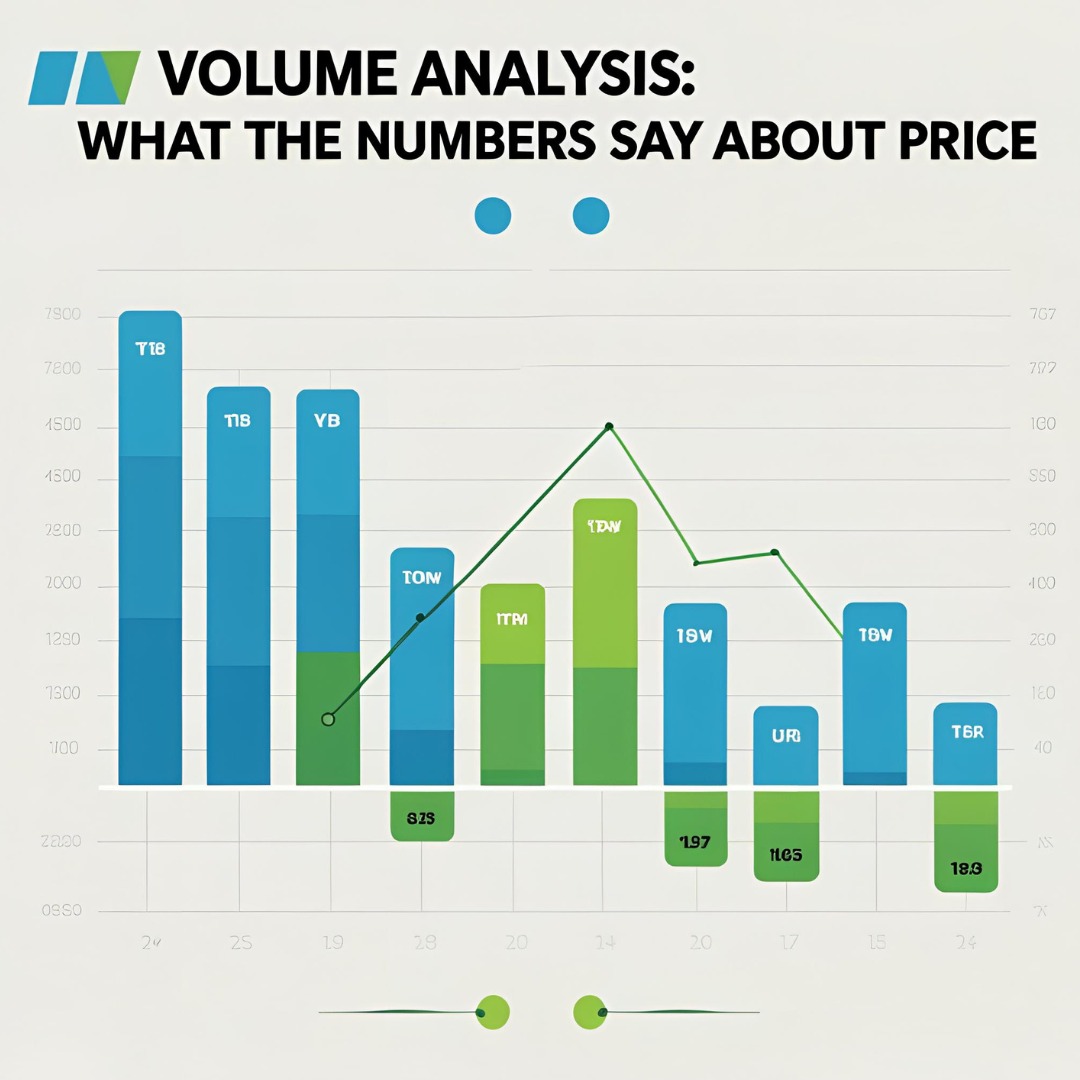Volume Analysis: What the Numbers Say About Price
In the fast-moving world of financial markets, price often steals the spotlight. But behind every price movement lies another critical indicator — volume. Volume tells you how much of a security has been traded over a certain period. And when interpreted correctly, it can provide powerful insights into the strength, direction, and sustainability of a price move.
In this blog, we’ll explore what volume analysis is, why it matters, and how traders use it to make better decisions.
What is Volume in Trading?
Volume refers to the number of shares or contracts traded in a security or market during a given period. It can be tracked for stocks, futures, options, or any tradable asset.
For example:
- If 1 million shares of a stock were traded in a single day, the daily volume is 1 million.
- A sudden spike in volume often indicates increased interest from traders or investors
Why Volume Matters?
Volume is considered a leading indicator because it precedes price. Understanding volume trends can help traders:
- Confirm breakouts and reversals
- Gauge the strength of a trend
- Spot early signs of market interest
- Avoid false signals
High volume often means there is strong convictionbehind a price move. Low volume, on the other hand, might suggestbehind a price move. Low volume, on the other hand, might suggest, increasing the chances of afalse breakout.
How to Use Volume in Your Trading Strategy
1. Volume Confirms Trends
- If price is rising and volume is increasing, the uptrend is strong.
- If price is rising but volume is falling, the trend may be losing momentum.
- Similarly, falling prices with rising volume suggest strong selling pressure
Tip: Look for volume spikes at key support and resistance levels — they often precede significant moves.
2. Volume Precedes Price
Volume often surges before major price changes, indicating growing interest or awareness. Smart traders look for unusual volume activity as a sign of potential upcoming volatility.
3. Volume and Breakouts
Breakouts accompanied high volume , indicating growing interest are more likely to be genuine. A breakout on low volume might be a false move,known as a “bull trap” or “bear trap.”
Example:A stock breaking above resistance on strong volume suggests buyers are serious, increasing the chances of a sustained rally.
4. Volume Divergence
Volume divergence occurs when price moves in one direction, but volume moves in the opposite direction. This can signal a potential trend reversal.
Popular Volume-Based Indicators
While raw volume data is useful, many traders use indicators to simplify analysis:
🔹On-Balance Volume (OBV)
Cumulative volume-based indicator that shows whether volume is flowing into or out of a security.
🔹Volume Oscillator
Measures the difference between two volume moving averages. It highlights shifts in buying/selling pressure.
🔹Chaikin Money Flow (CMF)
Combines volume and price to indicate buying/selling pressure over a set period.
Final Thoughts:Listen to the Numbers
Price tells you what is happening. Volume tells you how strong it is. Together, they offer a clearer picture of market behavior. By incorporating volume analysis into your strategy, you can spot high-probability setups, avoid traps, and improve your timing.
Remember:Volume isn’t just a statistic. It’s the voice of the market. Listen closely, and it will tell you more than the price ever could.
